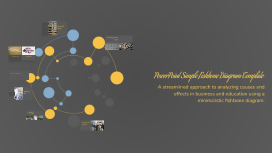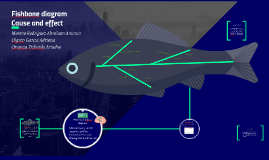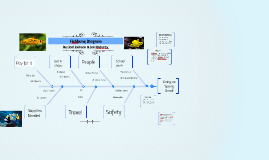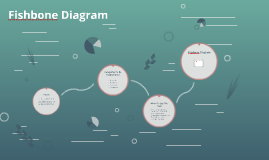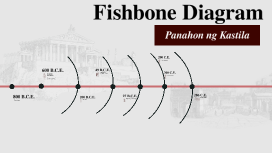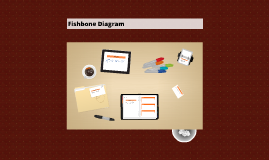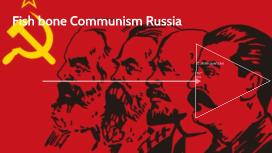FIshbone diagram
Transcript: Fish bone Communism Russia Backbone Propaganda campaigns to boost the view of the leader, view him as perfect and a saviour. Posters, paintings in homes, huge monuments, statues, parades, shows of strength. Alexander II made many liberal reforms and freed millions of serfs. Unfortunately people struggled with little money after being freed and it was difficult for millions to feed their families. A distaste for capitalism forms. Lenin, Trotsky, Stalin leading the revolution. Nicholas abdicates his throne for a provisional government. The Bolsheviks overthrew it. The Bolsheviks and the Mensheviks fought and the Bolsheviks won, they killed and destroyed the Romanovs’ bodies, this in a way ended all possibilities of a future monarch since it was the end of the bloodline and the bodies were annihilated and all remains thrown in the water leaving no room for a martyr or any way for them to come and pray to their celestially endowed saviors Educate from childhood the correct beliefs, certain films selected to be played in schools and edited as time went on and the party’s beliefs changed. Alexander III made peace with many countries other than a few military expansions. He hung Lenin’s brother, Lenin was hell bent on bringing down the establishment of the monarchy. Music, books films were written and updated to portray soviets as the best (The Battle for Berlin, Days of Glory, North Star) Lenin used some capitalist policies to recover from the civil war with NEP, nouveau riche enjoyed policy and the economy recovered, quickly abolished after Stalin came into power. Success of industrialization silenced all possible protesters internally because no one could deny the economic progress being made. Nicholas II thought that WWI would unite Russia and he could regain the approval of his people. They lost badly, people questioned the army and Nicholas II’s ability to lead. This led to strikes and to the formation of soviets with a simple slogan “Peace...Bread...Land” Secret police (KGB) (NKVD) sending those with alternate ideologies or criticisms of the governments to work camps known as gulags or executing them in order to stop them from spreading their ideas, the spread of any of these new ideas would mean the downfall of the soviet party. Edited pictures of Stalin to not only make him look better but to get rid of his association with traitors or anyone he thought was a threat to power Millions starved through famine by Stalin after trying to reject the collectivist demands set by Stalin by burning crops and killing cattle. Head The consequences of following these ideals came from the lack of government accountability, Stalin's fear of losing the preference of the people and then being executed led him to mass killings of those who he feared were against him No government accountability allowed millions to be put to death through starvation and put to work in gulags. This is because Stalin did not want to lose control over his state; he wanted to quell the rising Ukrainian nationalism, and the Ukranians’ rebellions against Stalin’s imposed collectivism by burning crops and killing cattle. Privacy was sacrificed under the argument of ensuring government accountability and so those who were doing wrong on the part of the party were found out immediately and their executions were made known to serve as a warning to those who would like to follow in their footsteps and as encouragement and hype for those on their side. The economic effects were that the centrally planned economy allowed economic resources to be mobilized and it allowed the country to rise from a point where it was not even up to date with the average european economy to it being close to being on par with the Americans, in terms of not only economy but scientific advancements. The social consequences are in the new attitudes towards those who “don’t work hard” and those who “work hard”. Putting people to work and ensuring people are working is for everyone’s benefit, so the attitudes towards those who don’t work are more hostile than in a capitalist society where those who don’t work don’t have an effect on the whole. Along with these social consequences are the boosts in literacy and education since Russia needed to modernize it needed intelligent people with Russian values to help bring Russia to a point where it is economically on par with the rest of the world to ensure their safety. This meant that there would be huge amounts of education and hospital investments, this ensured that when workers became no longer easily replaceable, that those who were educated would serve the soviet union for a long time. Tail Freed serfs too poor to buy land and even when they borrowed money struggled with loan payments People’s unrest and hunger led to a willingness to accept a rise of a “proletariat” government, one that could understand them, represent the workers and lead their country to a quick industrialization for the better of the country and to fulfill






